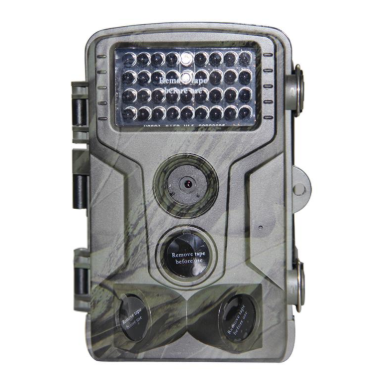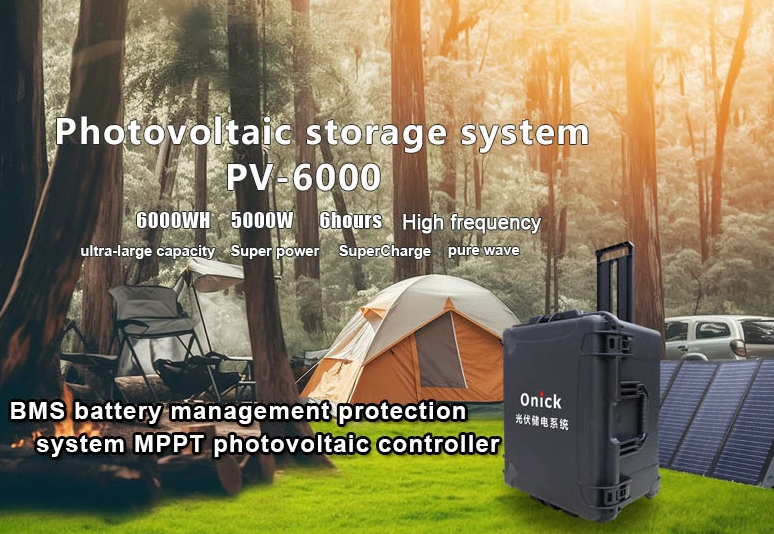Wildlife surveillance cameras, crucial tools for recording natural ecology and tracking wildlife, often require long-term, stable operation in unmanned environments. Power supply is crucial for their continued operation. The Onick VP-6000 photovoltaic energy storage system, with its unique operating principle, provides reliable energy for various types of field surveillance cameras, becoming an "invisible backup" for ecological monitoring.

In the photovoltaic conversion process, the VP-6000's solar panels, thanks to their nano-anti-reflective coating, capture limited sunlight, even in the diffuse light conditions found in dense forests, and convert it into direct current. This efficient light energy utilization is particularly crucial for surveillance cameras installed in tree canopies or shaded valleys. Even with only 3-4 hours of daily sunlight, sufficient energy can be accumulated to maintain basic camera operations. For example, in tropical rainforest monitoring projects, where cameras are stationed in dense shade, the VP-6000's monocrystalline silicon solar panels convert the dappled sunlight filtering through branches and leaves into a stable current, laying the foundation for subsequent energy storage and power supply. For energy storage, the 6000Wh lithium iron phosphate battery pack adapts to the power requirements of surveillance cameras of varying power consumption. For low-power infrared trigger cameras (standby power consumption of approximately 0.5W, peak power consumption of 5W during shooting), a fully charged VP-6000 can support continuous operation for months without recharging. The battery management system (BMS) precisely regulates the charging rhythm during this process. When the camera is in sleep mode at night, it automatically reduces the charging current to prevent battery degradation from long-term low-current floating charge. During daytime periods of active shooting (such as during peak bird activity), charging efficiency is improved to replenish depleted power.
The power output and regulation mechanism perfectly match the operating characteristics of surveillance cameras. The intelligent inverter converts DC power to the regulated 12V or 24V voltage required by the camera, ensuring the proper operation of components such as the infrared fill light and motion sensor. The control system monitors the camera's operating status in real time, enabling dynamic power allocation. When it detects the camera entering high-speed continuous shooting mode (such as capturing a cheetah in action), it automatically increases instantaneous power. During periods of low activity, such as early morning, it switches to energy-saving mode, maintaining the sensor's minimum power consumption. This "on-demand power" approach improves energy efficiency by over 40%, making it particularly suitable for extending power cycles during winter, when food is scarce and animal activity is reduced.

Diverse charging modes provide flexible options for monitoring operations in remote areas. Near monitoring stations with access to mains power, the system can be fully recharged in just six hours via mains fast charging, meeting the centralized power needs of cameras during seasonal maintenance. At key monitoring points in uninhabited areas, a charging array consisting of multiple 36V photovoltaic panels leverages the strong sunlight of the plateau and desert to generate an average daily power output of 1.2 kWh, fully covering the daily power consumption of medium-load cameras (approximately 0.8 kWh). In a highland Tibetan antelope monitoring project, the VP-6000's photovoltaic charging system maintained over 70% charging efficiency even at temperatures as low as -15°C, ensuring the camera could successfully record animal migration routes in extremely cold weather.
This collaborative operation model completely solves the power pain points of traditional field monitoring: compared to the high cost of frequently replacing disposable batteries (each camera consumes 50-80 AA batteries per year), the VP-6000's solar power solution reduces operational and maintenance costs by over 90%. Compared to diesel generators, its quiet, zero-emission design avoids disturbing wildlife habitats. In practical applications, researchers can remotely monitor the VP-6000's battery status to predict the camera's battery life, significantly reducing manpower input during field inspections and making ecological monitoring more efficient and environmentally friendly.


